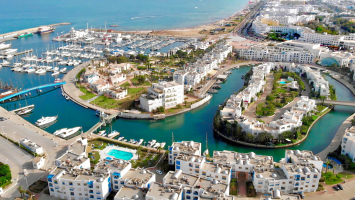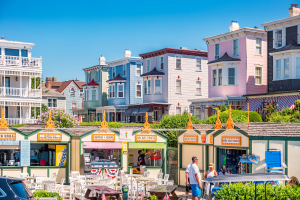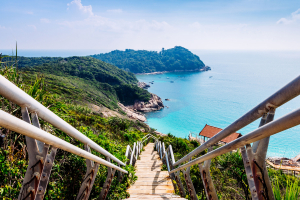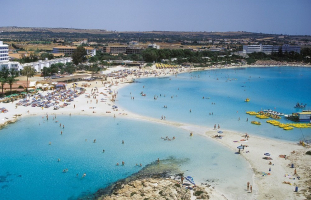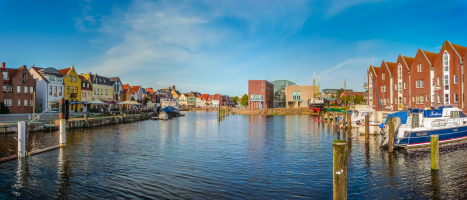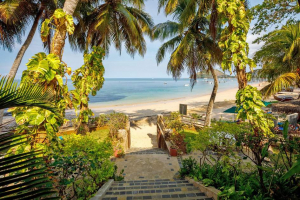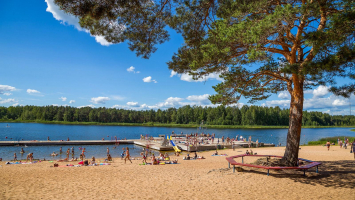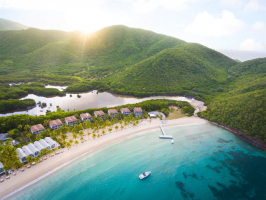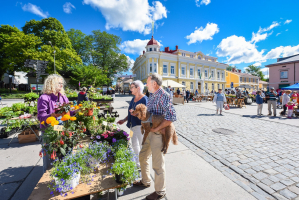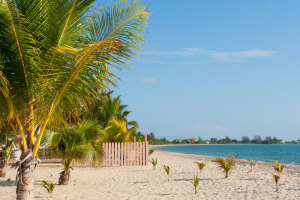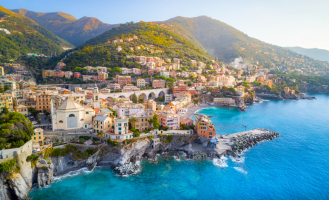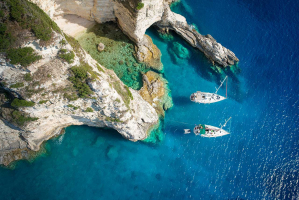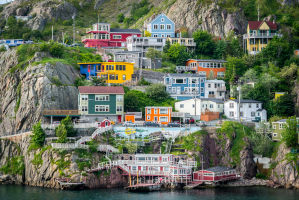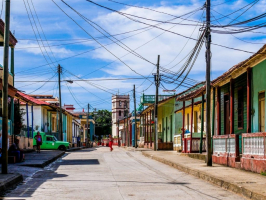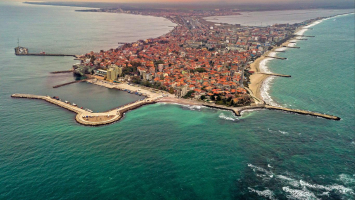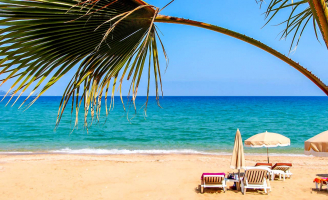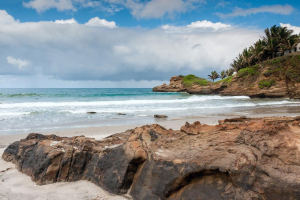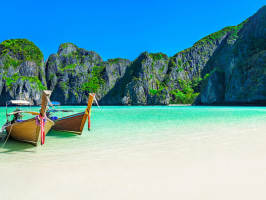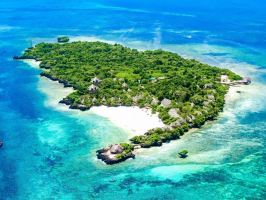Top 12 Most Beautiful Coastal Towns in Croatia
People often consider Greece, Italy or Spain to spend their holidays when it comes to a wonderful attraction. However, Croatia just sounds unfamiliar to ... read more...strangers, but not for travel buffs. Here are some of the Most Beautiful Coastal Towns in Croatia.
-
As a mesmerizing place to immerse yourself in this beautiful country, Zadar in Croatia is definitely worth mentioning on the list of the Most Beautiful Coastal Towns in Croatia. Once you set foot on this place you can find the squares, fisherman casting their rods on the seashore and the alluring aromas of the traditional strukli and burek swirl in the bakeries. Furthermore, you can come to the market, which is one of the best places to visit in Croatia as it is full of fresh local products and traditional foods.
With Roman ruins and the enormous 11th-century basilica of St. Donat, Zadar was once a Roman city. Today, the Forum, the city's central area, is a museum outdoors. The Benedictine Convent, opposite to the Church of Santa Maria, is home to the adjoining Zadar Gold and Silver Museum, which houses a significant collection of artifacts and historical artifacts made of precious metals.
- Location: Zadar
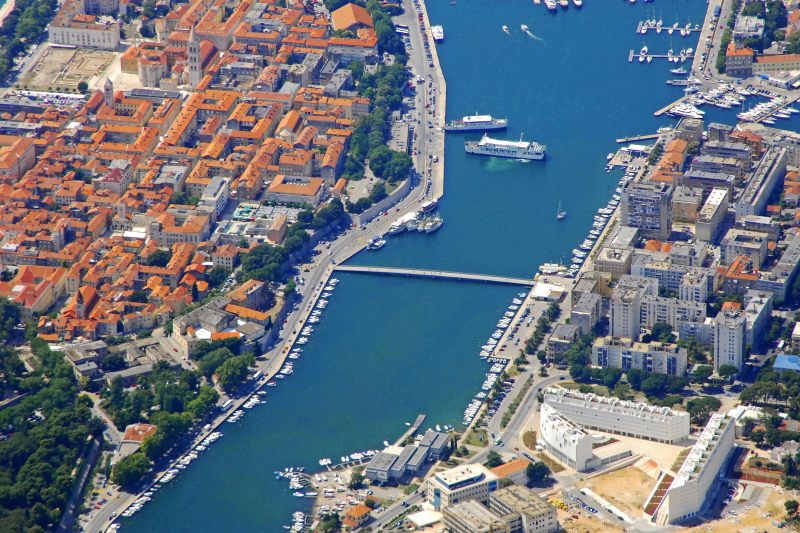
https://marinas.com/ 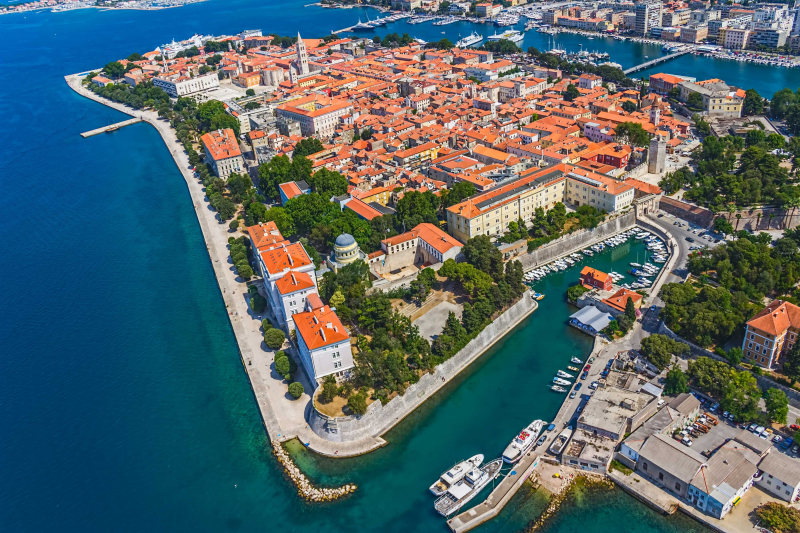
https://www.costacruises.com/ -
As a great place to sit, relax, explore the medieval—styled streets and get some sunshine on the beach, Sibenik has yet been packed with people compared to the large number of other coastal towns in Croatia. This stunning city houses one of the most mesmerizing things on Earth as the Krka River meets the Adriatic Sea in Sibenik Bay, and this unparalleled mix of fresh and salt water is the perfect environment for seafood to thrive.
When you are here, do not forget to savor all its cuisine, including mussels with local buzara sauce which is the typical dish in the area. Besides, Silbenik plays a vital role for those aspiring to explore Krka National Park. Honestly, there are some ways for you to get there. Krka National Park can be reached either by bus, car, ferry, or you can rent a sailboat to steer to the park's water falls.
- Location: Sibenik
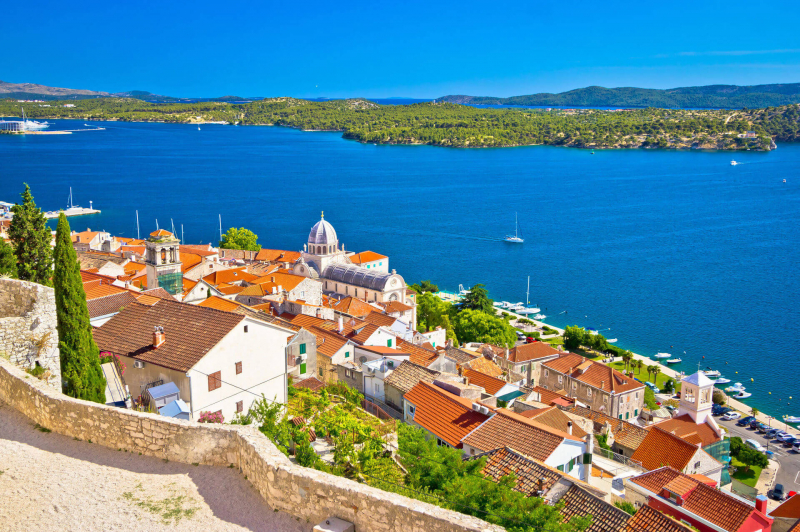
https://www.korculaadventures.com 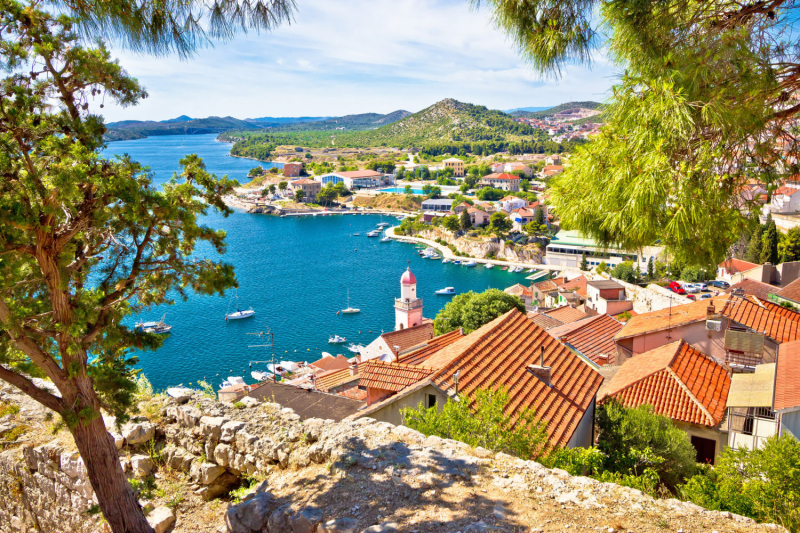
https://www.camping-simuni.hr -
Hvar, a Croatian island in the Adriatic Sea, is sandwiched between the islands of Bra, Vis, and Korula. It is situated off the coast of Dalmatia. The island of Hvar, which measures 68 km (42.25 mi) in length and has a steep east-west ridge made of Mesozoic limestone and dolomite, is unique in the region for having a sizable fertile coastal plain and fresh water springs. In addition to vineyards, olive groves, fruit orchards, and lavender fields in the agricultural sections, its hillsides are covered in pine forests. Mild winters and bright, sun-filled summers are the defining features of the climate.
One of Croatia's most picturesque coastal towns, Hvar attracts an odd concoction of jet-setting celebrities and traditional Italian farmers. The village's center is a maze of polished marble squares, dim stone passageways, and steep staircases that lead to buildings with ocher roofs and medieval façade.
The island's high hills, which are surrounded by rolling vineyards, meandering coastline roads, and secret coves, are obscured by the thick haze of the Mediterranean heat. It is not unexpected that Hvar receives close to 200,000 visitors annually.
- Location: Adriatic Sea
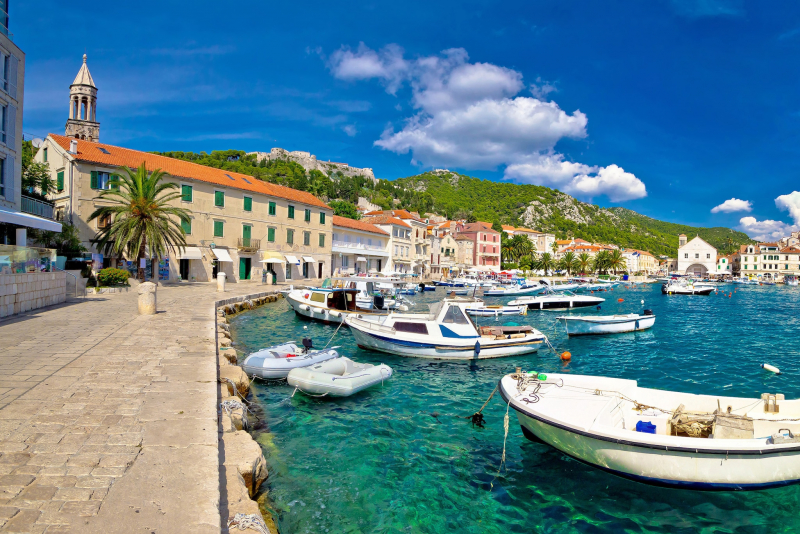
https://www.cunard.com/ 
https://movecroatia.com/ -
Croatia's Primorje-Gorski Kotar County includes the village and municipality of Baska, which is situated on the southeast coast of the island of Krk. There are 981 people living in Baka alone, according to the 2011 census, which put the municipality's population at 1,674.
Since the 19th century, tourists have been to this cultural and historical hub with its old stone houses and winding lanes, and it has grown to be a well-liked resort. It is well-known for its 1100-year-old inscribed stone monument, numerous nearby beaches, and its long history of tourism.Among the most visited destinations in the largest Croatia Island, Baska is nest known for its entertaining possibilities during summer time, including concerts, festivals, parties and so on. Beyond that notorious roles, Baska has the favorable condition for some activities, such as hiking or biking. Also, it is home to the turquoise and crystal—watered beach. Some activities that you can try here, including renting boats, pedal boats and surfboards too.
- Location: Primorje-Gorski Kotar
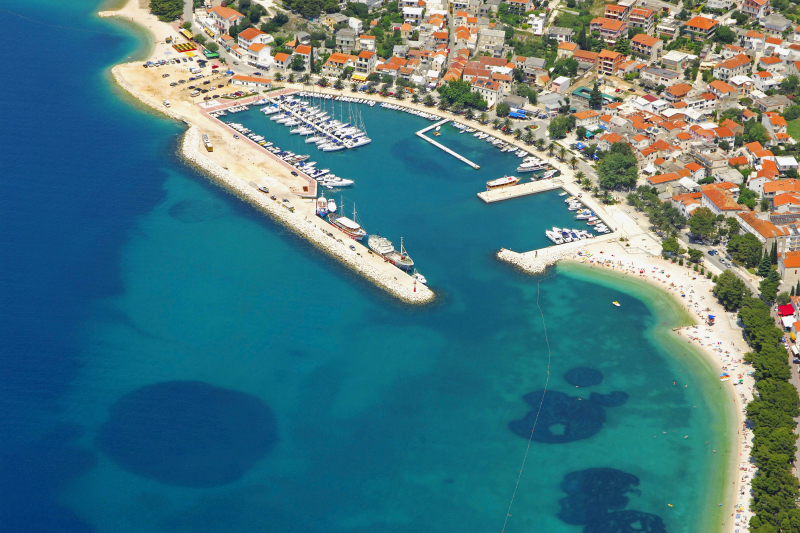
https://marinas.com/ 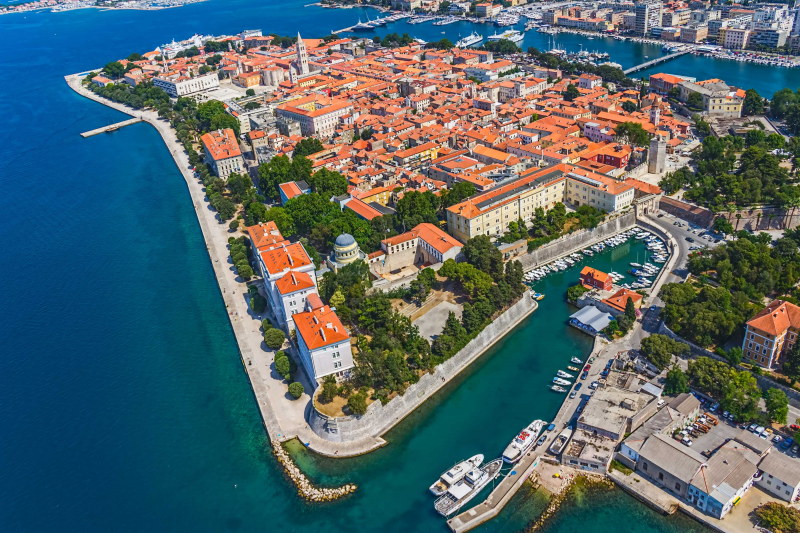
https://www.aurea-krk.com/ -
Between the Biokovo mountain and the Adriatic Sea sits the tourist town of Brela. It is referred to as the Makarska Riviera's pearl. The term given to the city of Dubrovnik is "the pearl of the Adriatic" or "the pearl of the Mediterranean." Brela received the title of "Champion of the Adriatic" in 1968 for outstanding achievements in the tourism industry.
The "Kamen Brela" (Brela Stone), a little rock island off Brela's principal beach, the Punta Rata beach, is the town's emblem. The Punta Rata beach was listed as one of the top 10 beaches in the world by the American magazine Forbes in 2004. It is currently ranked sixth globally and first in Europe.15 km northwest of Makarska is located the municipality of Brela. It is believed to house the most beautiful beaches in Croatia. The best known Brela beach, Punta Rata, indeed, is named as one of the ten most beautiful beaches in the world since the year 2004.
- Location: Split-Dalmatia County
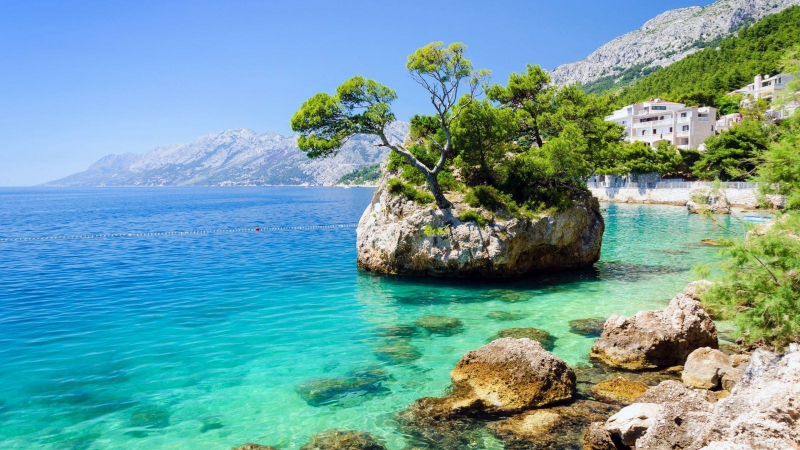
https://www.bluesunhotels.com/ 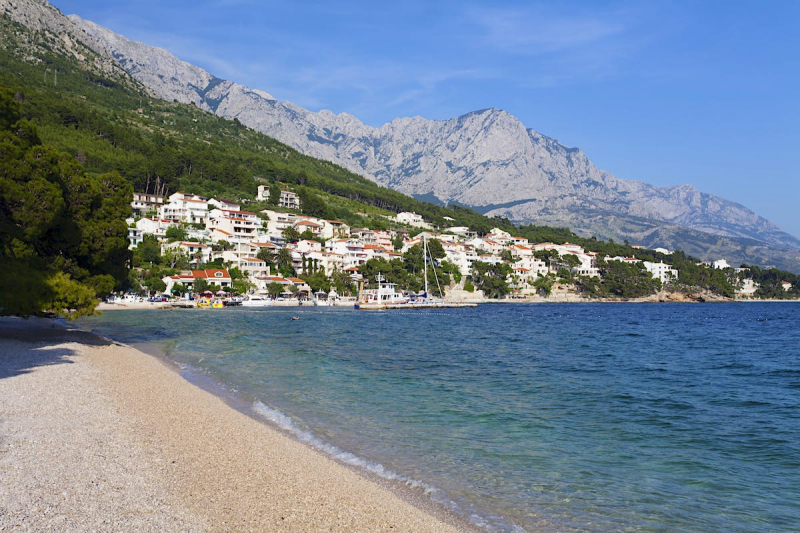
https://www.lonelyplanet.com/ -
In Croatia's Dubrovnik-Neretva County, Cavtat is a village. It is the administrative center of the Konavle municipality and is located on the Adriatic Sea coast 15 kilometers (9 miles) south of Dubrovnik. Today, Cavtat is a well-liked vacation spot with a large number of hotels and private residences that rent out rooms and apartments.
There are many stores and eateries along the seashore. There are numerous beaches in Cavtat and the area, including Pasjaa, Kljuice, Obod, Rat, and Al. The village has ferry service to the nearby towns of Dubrovnik and Mlini. Along the coast, there are frequently a lot of private luxury ships and yachts. A tomb belonging to the Rai family that was decorated by the sculptor Ivan Metrovi is located in the town cemetery up on the hill.
Cavtat won the European Competition for Towns and Villages in Blooms title in 2004 thanks in large part to the beautifully landscaped green spaces and floral arrangements along the beach promenade. Since 2007, the Epidaurus Festival of Music has taken place yearly in Cavtat.
- Location: Dubrovnik-Neretva County
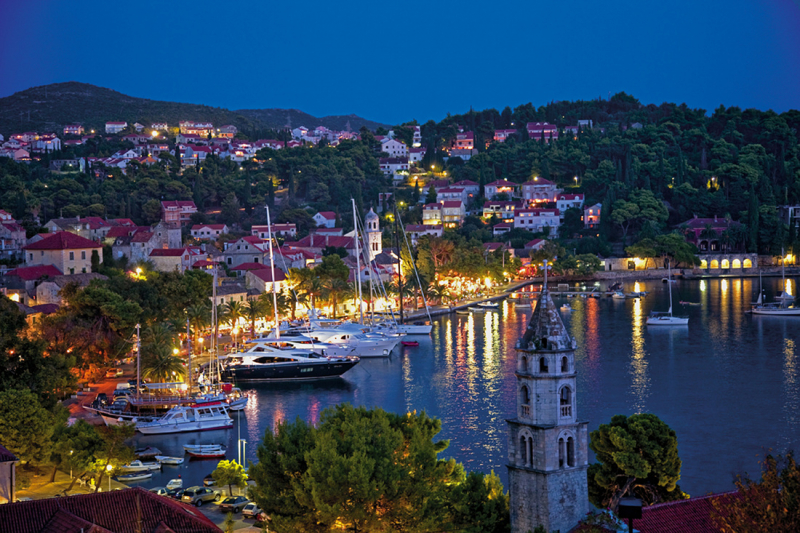
https://cavtat-pansion-lovac.com/ 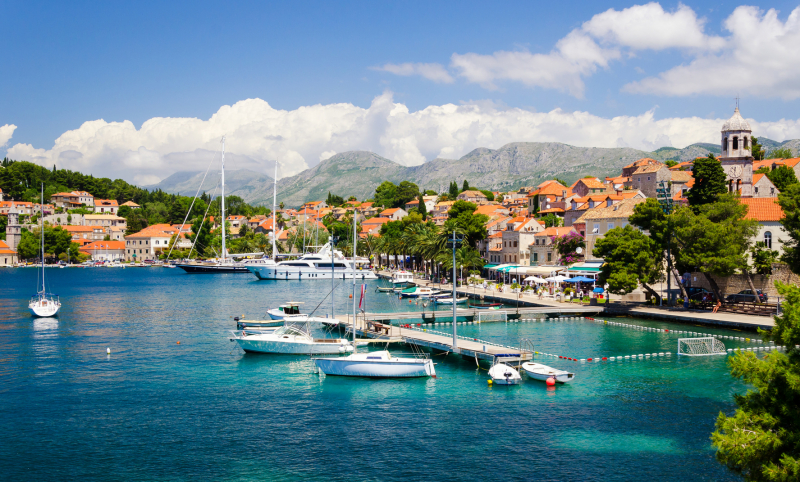
http://www.sailingeurope.com/ -
Primosten is a small town with only 3000 residents, but more people visit every year because of its beauty and many tourist attractions. Primosten is a popular destination for rural tourists since it has many families who are passionate about preserving Dalmatian culture.
These families will be happy to expose you to Dalmatian food, traditional music and instruments, characteristic domestic animals, and much more. When visiting Croatia, be sure to sample Dalmatian peka, a wonderful pork dish with baked potatoes.
The main town plaza has weekly traditional folklore performances throughout the summer so that you can experience Croatian culture from all around the country. Primosten attracts a lot of young people because of its vibrant summer nightlife, which includes foam parties and live music.
Primosten is a highly popular destination for rural tourists, and many local families uphold the Dalmatian culture. They will be happy to show you around the kitchen and play local music and instruments for you. Don't forget to sample Dalmatian pie, a mouthwatering pork dish with roasted potatoes that you must try when in Croatia.
- Location: Šibenik-Knin
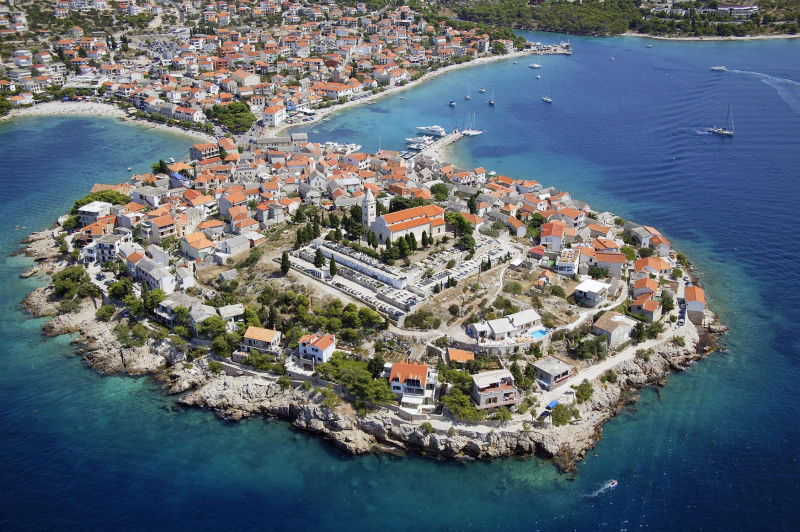
http://waypoint.hr/ 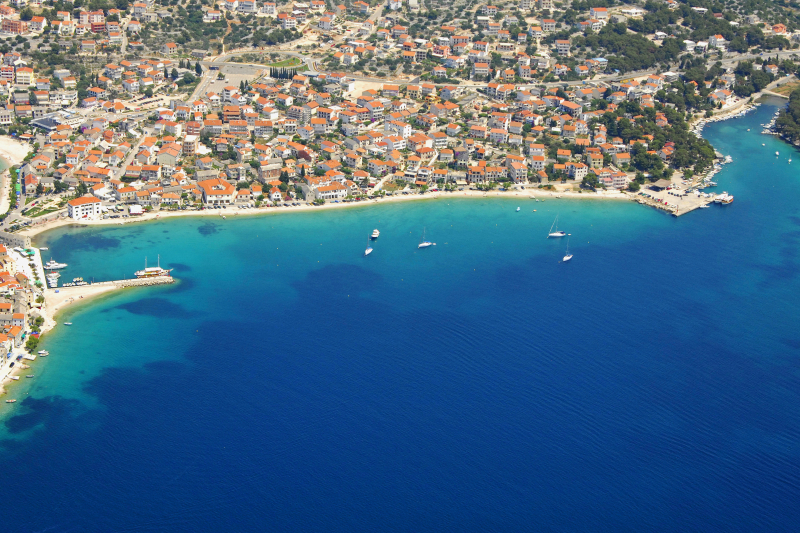
https://marinas.com/ -
The name Omi is thought to have originated from the Slavic word Holm, Hum, which was a translation of the Illyrian-Greek word Onaion, Oneon, which means "hill" or "place on the hill," or from the Greek word onos (o), which means "donkey," perhaps from the shape of the rocky promontory by the city (naming a city after a natural form was common practice then, as it is now); it is also possible that the name Petar Imunovi claims that Omi is descended from Proto-Indo-European *almissa ("rock", "cliff").
This quaint small village is only 30 kilometers southeast of Split. Omis has a rich cultural heritage that draws more tourists every year. The Fortica and Mirabella strongholds in Omis, which offer a chance for a breathtaking 360-degree perspective, are the city's most recognizable landmarks. The fact that Omis is a great town for outdoor sports is probably what makes it so interesting. The Cetina Canyon offers a variety of adrenaline-pumping activities, including ziplining, rafting, kayaking, and more. All we know is that it will be a memorable experience!
- Location: Split-Dalmatia
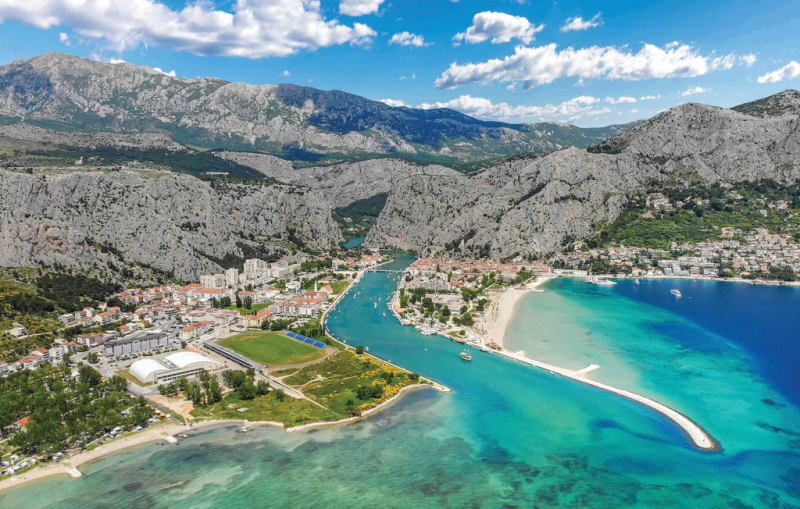
https://www.novasol.com/ 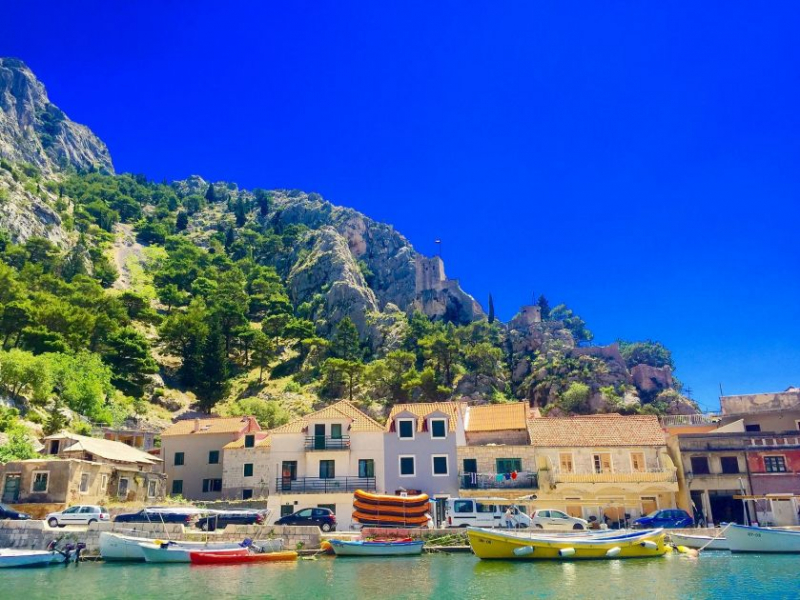
https://activitybreaks.com/ -
Rovinj, which is located on the Istrian peninsula, is one of the locations you must visit if traveling through this region of Croatia. Some of the locals continue to speak Istriot, a Romance language that was once widely spoken in this region of Istria. Both the Croatian and the Italian names for the town are recognized as official and equal.
Despite not being one of the largest towns on this list, it has incredible beauty. The Old Town of Rovinj is distinguished by its winding cobblestone alleys and waterfront near the harbor, where you may enjoy some traditional Croatian cuisine while sipping coffee.
St. Euphemia Church, one of Rovinj's top attractions, has a bell tower that mimics that of St. Mark's Square in Venice just a little bit (which is no wonder since the Venetians built the church in Rovinj as well). If you wish to travel to the Brijuni National Park, Rovinj is the best place to start.
- Location: Istria
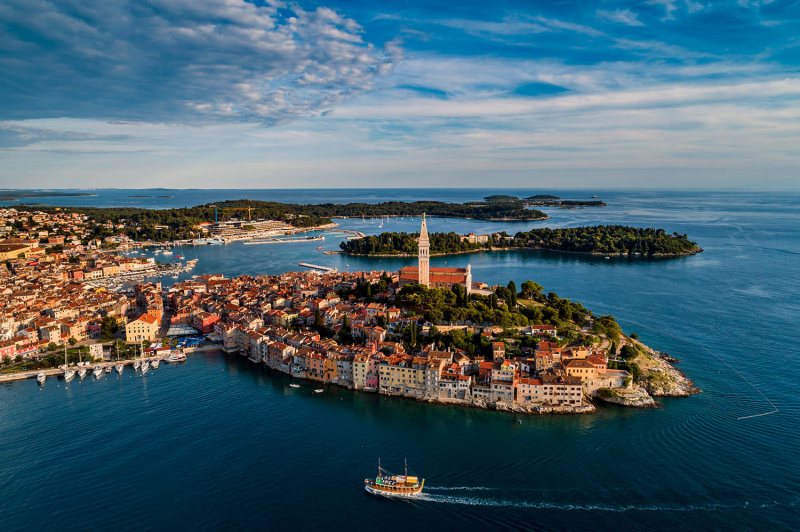
https://www.boatstransfer.com/ 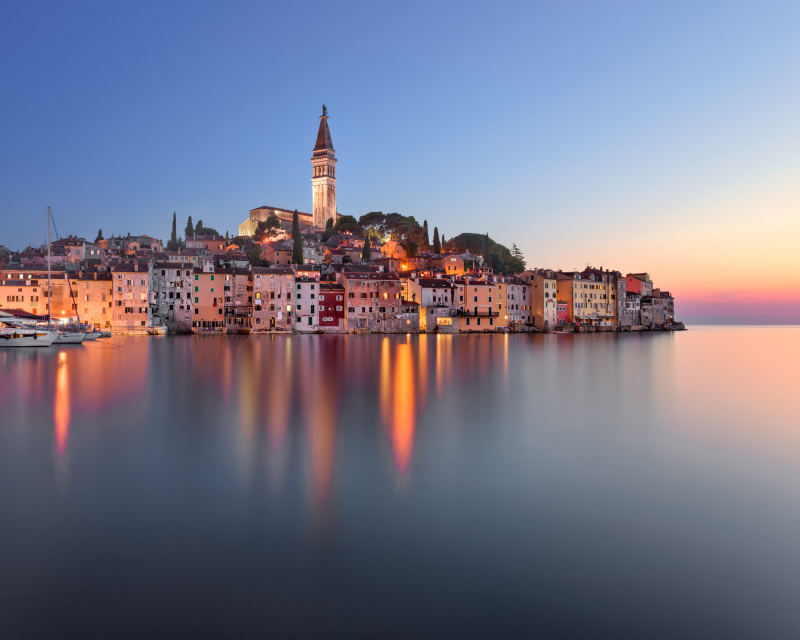
https://ansharimages.com/ -
2300 years of uninterrupted urban tradition can be found in Trogir. Ancient Greeks, Romans, and Venetians all had an impact on the development of its culture. Trogir, which is located on a tiny island and features a significant number of palaces, churches, and towers as well as a fortress, was added to the UNESCO World Heritage List in 1997.
"This island settlement's orthogonal street layout dates to the Hellenistic era, and it has since been adorned by numerous beautiful household and public structures as well as fortifications. Its magnificent Renaissance and Baroque architecture from the Venetian era contrast with its exquisite Romanesque churches "according to the UNESCO study.
This charming village is 20 kilometers west of Split and is a popular summer holiday destination among Croatia's smaller towns. Why, you may be asking. For starters, we could describe it as "a mini-version of Split" because of the Old Town's winding alleyways, the main square where locals gather for coffee, and the breathtaking waterfront, where you can wander or dine while taking in the view.
- Location: Split-Dalmatia
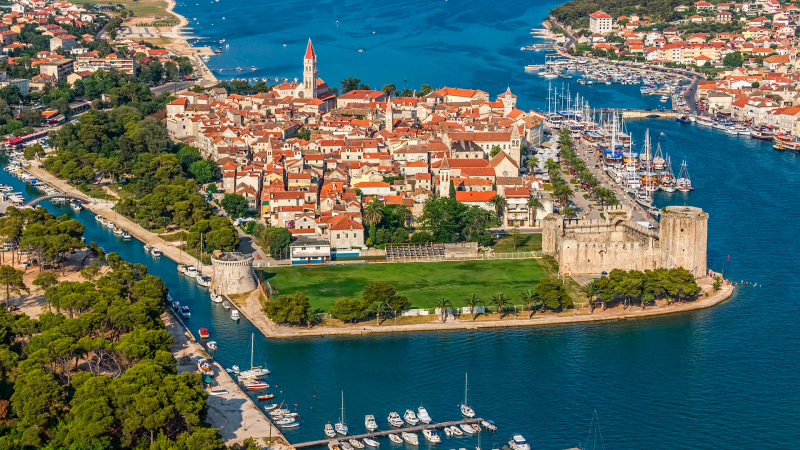
https://simplesail.com/ 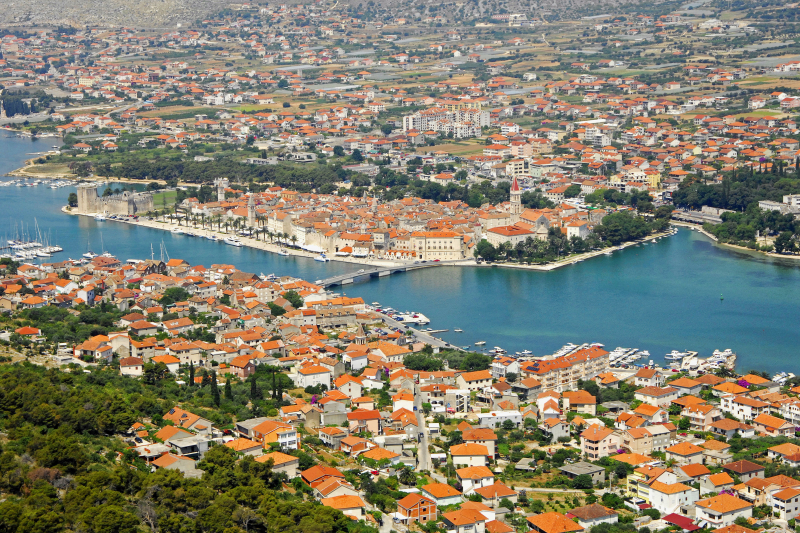
https://marinas.com/ -
Another lovely Istrian town, Umag, may be found in Istria's far north, not far from Slovenia's border. The Old Town is unquestionably the most fascinating area of Umag, making it perfect for individuals who prefer to explore on their own without having to keep track of the passing minutes.
After World War II, the tourist sector grew fast thanks in large part to the geographic location of Umag and has continued to thrive since then. The increase of this economic sector, which is closely connected to other economic resources in the region, the most major of which is agriculture, can be attributed to both the proximity to large west European markets and the improvement in the living standards of East European countries.
The 10th-century City Walls and the Umag Museum, which features exhibits about ancient occupations and old Roman pots used in this region during the Roman Empire, are the two most recognizable landmarks in Umag.
- Location: Istria
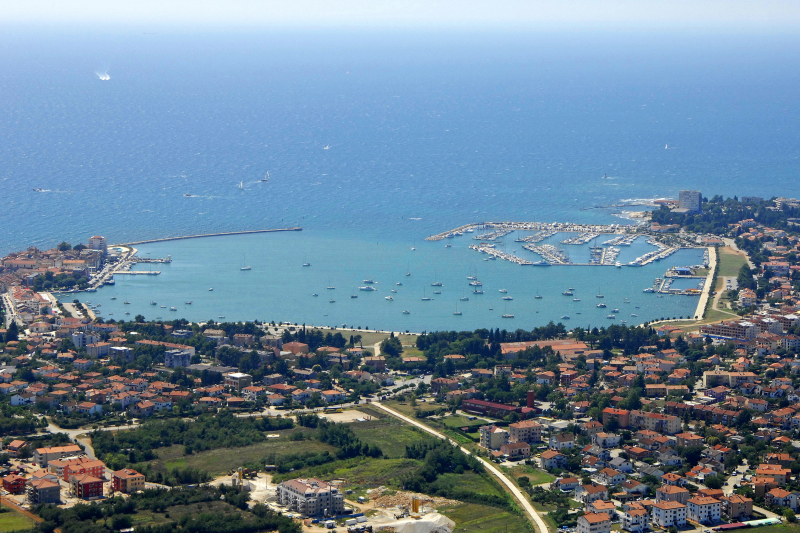
https://marinas.com 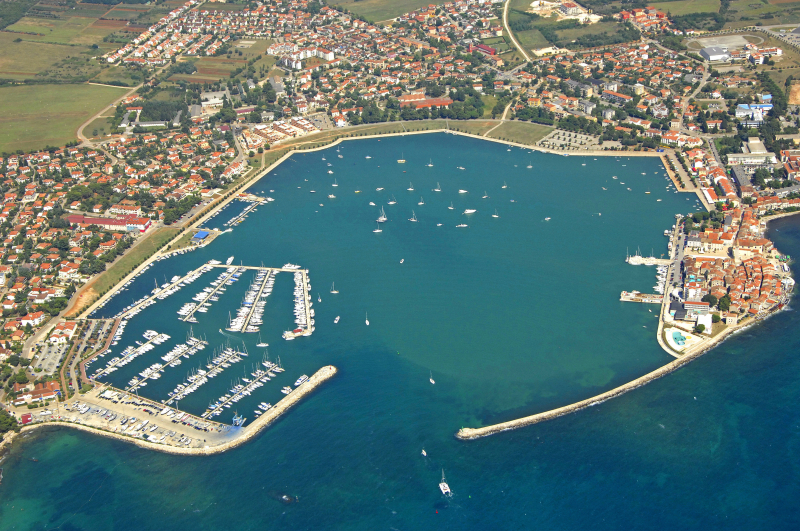
https://marinas.com/ -
Solin, a tiny town in southern Dalmatia, comes in last but certainly not least on the list. Since Solin was formerly one of the major Roman cities in this region under the administration of the emperor Diocletian, it is renowned for its extensive historical background. Visit the renowned Salona Ruins to experience time travel.
The Solin center, on the other hand, is quite beautiful. You may wander along the Jadro river, go to St. Mary's Church on Our Lady's Islet, or just relax with a coffee by the river cascade. Even a popular Solin tale claims that treating infertility by drinking water from a well close to the church. Don't miss seeing Klis Fortress, which served as both the City of Meereen and Klis Fortress in the blockbuster Game of Thrones television series.
Solin became little more than a Split suburb in the 20th century as a result of the Split basin's extensive industrialization activity. Solin is now a well-connected section of the Split conurbation and has its own independent municipal status. Along with industry, tourism has recently grown in popularity thanks to the many historical sites and the Jadro urban parks that give Solin its characteristic appearance.
- Location: Split-Dalmatia
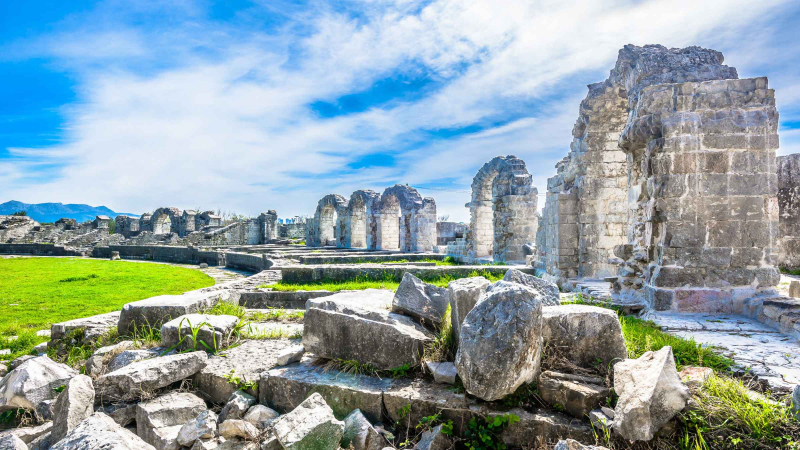
https://www.getyourguide.com 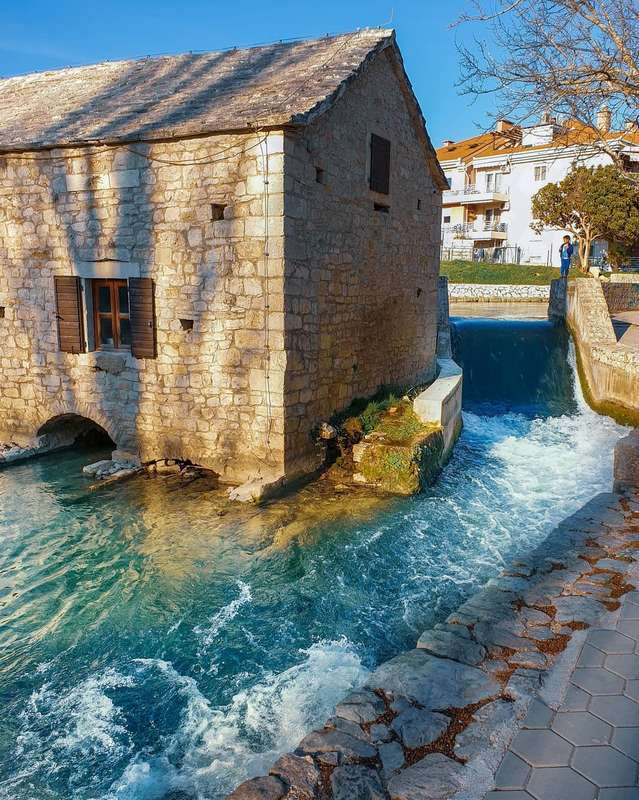
https://apartmentsrafaj.croatiadirectly.net/














